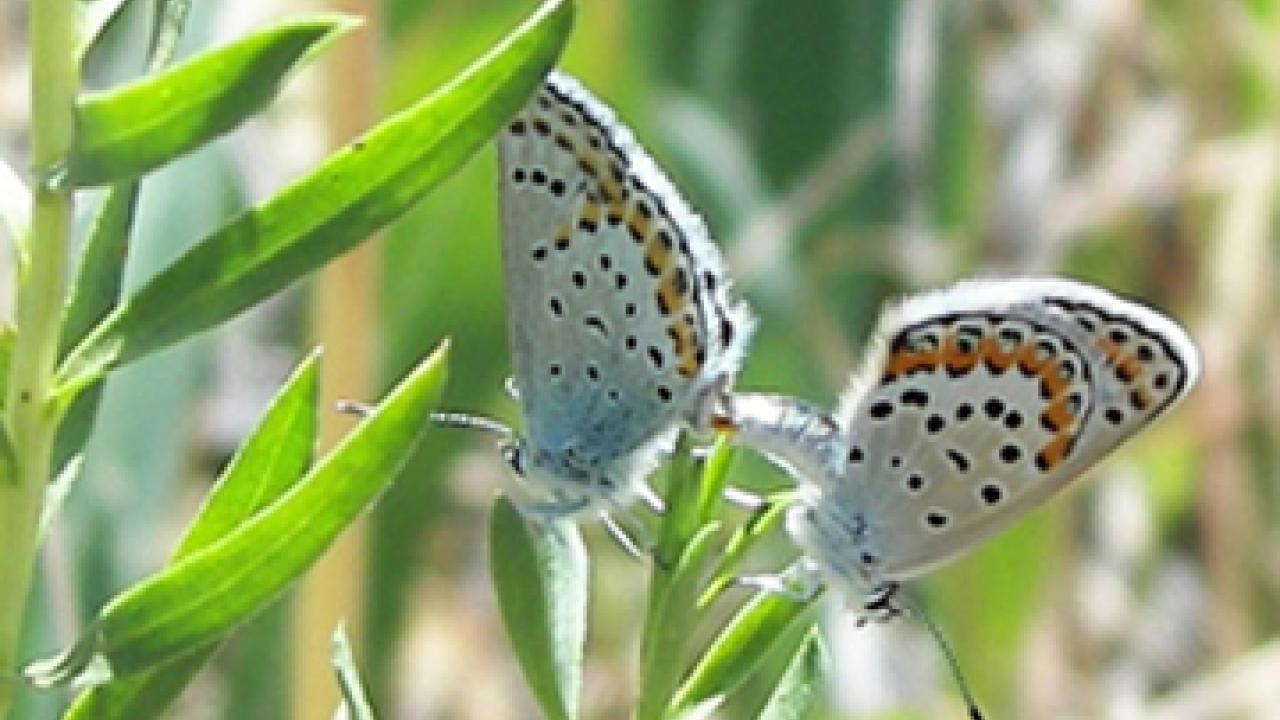High in the Sierra Nevada, a new species of butterfly has emerged as a hybrid of two existing species. It is the first time that this type of species formation has been shown in animals, according to the report published online Dec. 1 in Science Express.
"Darwin published On the Origin of Species in 1859, but we are still learning about the ways new species can form," said Arthur Shapiro, professor of evolution and ecology at UC Davis and co-author of the paper. This type of speciation has been shown in plants, but never in animals, he said.
Lycaeides melissa butterflies live on the eastern side of the Sierra, and Lycaeides idas live to the west. In between, in the harsh climate above the tree line, is a third, alpine species of Lycaeides.
Shapiro and others -- Zachariah Gompert, a graduate student at Texas State University; James Fordyce at the University of Tennessee, Knoxville; Matthew Forister at the University of Nevada, Reno; and Chris Nice at Texas State -- used molecular genetics techniques to show that the hybrid alpine butterflies carry a unique mix of genes from both parental species. There is no gene flow, or interbreeding, between the parent species and the hybrid.
Specimen collection occurred 30 years ago
The project began more than 30 years ago, when Shapiro collected the alpine species at Sonora Peak. At the time, the hybrids were not recorded in the scientific literature and were "almost entirely overlooked," he said. Fordyce, Forister and Nice are former students of Shapiro's, and they continued their collaboration with him after receiving their doctorates.
"Problems like this one are too big to solve in the time frame of a Ph.D. project," Shapiro said.
The alpine Lycaeides butterflies show unique behaviors that fit their extreme habitat. For example, the females of the lowland species glue their eggs to food plants, so hatching caterpillars will have a food source on hand. But in the high Sierra, the dead remains of the year's growth would get blown away in the winter, so the alpine Lycaeides let their eggs drop to the ground at the base of the plants instead.
The researchers calculated that the hybrids arose about half a million years ago, when L. melissa and L. idas came into contact in the Sierra Nevada. Subsequent climate changes left the hybrids isolated, and they evolved into a separate species.
Media Resources
Dave Jones, Dateline, 530-752-6556, dljones@ucdavis.edu
